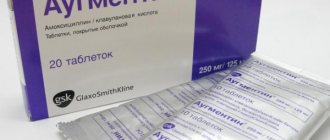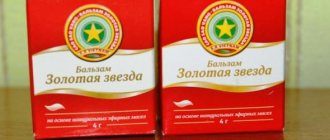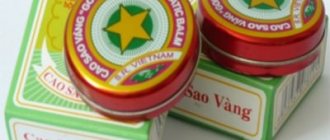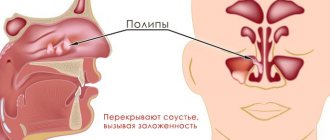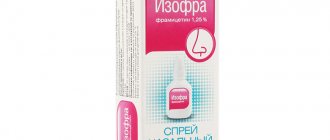Naphazoline is a drug that has vasoconstrictor and anti-edematous effects. Most ENT diseases are accompanied by swelling of the nasal mucosa, which greatly complicates breathing. Therefore, the use of vasoconstrictor nasal drops, such as Naphazoline, is necessary to alleviate the general condition. The drug can also be used for allergic reactions accompanied by nasal congestion.
Action and properties of the drug
The main active ingredient is naphazoline nitrate, in addition to which the drug also contains auxiliary components - boric acid, purified water, sodium chloride. The drug is produced in plastic bottles of 10 ml with a concentration of 0.1 and 0.05% in the form of nasal sprays and drops.
Naphazoline nitrate is a substance that helps stimulate alpha-1 and alpha-2 adrenergic receptors, which are located on the surface of blood vessels. This component leads to their narrowing due to the contraction of smooth muscles. Therefore, the use of the drug helps to quickly relieve swelling of the nasal mucosa. The action begins within 2-4 minutes, lasting several hours.
The use of Naphazoline also increases blood pressure.
Indications and contraindications
Instructions for use of Naphazolin indicate that the drug is widely used as symptomatic treatment of rhinitis in many pathological processes. However, the drug has a number of contraindications that must be taken into account in order to avoid the development of serious complications.
| Indications for use | Contraindications |
|
|
Contraindications
Children under 1 year of age, arterial hypertension, hyperthyroidism, increased sensitivity to naphazoline, severe atherosclerosis, chronic rhinitis, severe eye diseases, diabetes mellitus.
Simultaneous use of MAO inhibitors and a period of up to 14 days after the end of their use. Use during pregnancy and breastfeeding The use of naphazoline during pregnancy and lactation (breastfeeding) is possible only according to strict indications in cases where the expected therapeutic effect for the mother exceeds the potential risk of side effects in the fetus or child.
Instructions for use
Before using Naphazoline, you must carefully study the instructions for use of the drug. It is important to know that non-compliance with dosages and rules of use contributes to the development of overdose and side effects. Basic recommendations regarding the use of Naphazoline:
- Before using the medicine, you should sanitize the nasal cavity, clearing it of excess mucus and other contents.
- Adults are prescribed 2-3 drops of a 0.1% solution in each nasal passage 2 times a day, in case of emergency - up to 3 times.
- To stop bleeding, cotton swabs pre-moistened with a drug with a concentration of 0.05% are placed in the nostrils.
- For allergic conjunctivitis, a 0.05% solution is instilled behind the lower eyelid, 1 drop.
- To potentiate the effect of local anesthetics (Novocaine), use 2 drops of Naphazoline 0.1% concentration per 1 ml of anesthetic drug.
It is worth noting that long-term use of drops containing naphazoline hydrochloride or nitrate leads to rapid addiction and the development of psychological dependence: patients develop so-called medicinal rhinitis. Therefore, the course of treatment is 5 days, after which they take a break or replace the drug with another drug.
Nasal spray Dosfarm Naphazolin - reviews
A story about how I saved my family from “naphthyzine” (naphazoline) addiction.
In other words, doctors call this disease medicinal vasomotor rhinitis, although some “smart guys” in white coats of the old school still do not know about this type of ENT problem or do not want to help patients who are addicted to Naphthyzin, Naphazolin, Nozokar, Dlynos or ANY other VASUCONSTRUCTORS Nasal drops for both adults and children.
I, like no one, know about this problem: my husband got hooked on naphazoline (12 years of use!), his brother bought Naphazoline for a month at once - I saw how much of it was in the chest of drawers, 30 pieces at once!!! My brother's lifespan was about 8 years.
You may be deeply surprised by what was said, but this is the honest truth, and when I got married and moved to live with a new family, I decided to seriously start weaning my relatives from the habit of breathing only with drops.
But I started with myself. I'll tell you everything how it was.
In the winter I got sick, everything was as usual: a sore throat, a day later the temperature increased and a severe runny nose. The radiators in the apartment heat up very much; it is impossible to breathe in such a climate with a stuffy nose. Usually I was treated with Pinosol herbal oil drops (they actually kill germs and cure a runny nose in a few days, but they cannot cope with congestion).
I succumbed to the advertising, my husband bought me Nozokar. In essence, this is the same Naphazolin, only it needs to be used once every 12 hours, because it is more effective (due to a higher concentration of the active substance), supposedly one instillation is enough for half a day.
After injecting Nozocar, I was able to breathe, but ONLY for 2-3 hours. For FIVE days I sinned and instilled Nozokar once every 4-5 hours (well, I couldn’t resist, I was completely out of breath, compresses, inhalations, nasal massage, a quartz lamp, nothing helped).
That's how I got hooked on vasoconstrictors. Under no circumstances should you drip them for more than 5 days in a row and more often than written, and it is better to NEVER USE THEM for yourself, and especially DO NOT PUT CHILDREN.
The more you drip, the less the drops help, and the more you need to drip them in order to BE ABLE TO BREATHE AT ALL.
I’m not a doctor, I’ll explain it as best I know, vasoconstrictor drops act on the mucous membrane and on the vessels so that the mucous membrane atrophies, and the vessels cease to be able to narrow and expand when required.
As a result, a person feels constant or periodic, complete or partial nasal congestion (no snot, the nose does not run, on the contrary, it is dry).
When my acute respiratory infection subsided, but my nose was not breathing (no longer mucus, I just wasn’t breathing), I turned to an ENT specialist. They took a picture - the septum is normal, there is no pathology. They didn’t believe me that I was addicted to the drops. A couple of days later another ENT specialist was on shift, so I came again. I was categorically told that if physiotherapy and a special ointment did not help, then only an operation to trim the mucous membrane would save me.
I couldn’t imagine how the mucous membrane could be trimmed, it’s like a piece of meat, and I immediately imagined HOW (?) you can completely not breathe with turundas after surgery for several days, like with rhinoplasty. I’ve been walking here for two weeks with my nose half-breathing, and already my head is splitting from lack of oxygen and my blood pressure is jumping.
Physiotherapy became torture for me. The device is old, without attachments, just two bare wires, onto which a piece of moistened cotton wool is rolled up, inserted into the nostrils, laid on the couch and... turn on the current.
10 procedures were done in fear of the sight of wires, tingling, and current surges in an old device with a broken switch. Also, according to the recipe, a yellow ointment was made, which had to be applied daily to cotton wool and stuffed tightly into the nose for 10 minutes. She breathed through her mouth.
Nothing helped, it was especially scary to suffocate at night. Therefore, I dripped children's non-concentrated Naphazolin into at least one nostril.
At this stage, I sounded the alarm, told my husband’s brother that I had the same problem as he and my husband, and urged us to fight together.
WE HAVE COMPLETELY REFUSED DROPS.
The first days were scary, especially before bed, my nose was swollen.
We constantly washed our nose with Rinolux, Salin, Saline (a pad with liquid for a dropper, you can buy it at a pharmacy, it helps a lot). I read more than one review about these remedies, and also scoured the Internet in search of a cure for vasomotor rhinitis. But there is no cure, they haven’t come up with it.
To strengthen the vessels of the nose, they took Ascorutin or Rutascorbin.
We lasted a week, it was easier for my husband, even though he has so much experience!
My husband’s brother lost his temper, had his teeth and dentist treated, and was afraid of suffocating with his mouth open, so he put in drops, but after a couple of days he threw away his stash of Naphazolin.
So, two weeks have passed. I made an appointment again with an ENT specialist, and again found myself with a new doctor. She studied my card, listened to my stories and prescribed Flixonase spray. Although this is an antiallergic drug, the doctor assured that if it helps, it will be the only one.
I took Flixonase for a month. These drops helped us gain hope for a cure, and also relieved swelling. My husband managed without them.
I don’t know whether this drug helps with allergies, it’s just that Flixonase has become the final stage in the fight against the nose’s dependence on vasoconstrictor drops. Read more about it in a separate review.
It's been almost 6 (!!!) since we haven't used vasoconstrictor drops.
At the moment, my husband’s brother’s nose breathes best; he doesn’t sniffle at night, only blowing out dry crusts in the morning (it takes a very long time for the burnt mucous membrane to recover). My husband periodically complains of partial congestion, especially in a horizontal position of the head. My mucous membranes get very dry in the winter, when the air is dry from the radiators, there are crusts in the morning, my nose is not completely blocked, but rather 2/3.
Vasomotor rhinitis cannot be treated, but it is simply necessary to give up drops that are given forever. The nose will learn to breathe again on its own, but it will take time, a lot of time.
Once again, I would like to draw your attention to the fact that everything is fine with the nasal septum, i.e. there are 100% indications for surgery, and there is also NO certainty that after the knife (or laser) everything will COMPLETELY improve.
If you have a runny nose, rinse your nose with saline solutions, do inhalations, endure it in the end, but do not use vasoconstrictors, neither cheap domestic nor expensive.
Especially for infants, don't even get started!!! There are nozzle ejectors, Humer, or, as a last resort, Vibrocil for the night (they do not contain a high content of vasoconstrictor substance, but no more than 2-3 days, no more than 6-10 hours, and preferably only in one nostril, alternating).
I’m ready to answer your substantive questions in the comments, and when I see the pluses, I hope that I’ve helped you in some way.
Side effects
It is known that Naphazoline drops are well tolerated by patients in the absence of contraindications.
However, in some cases, side effects may develop, manifested in the form of local and general reactions. The occurrence of these symptoms also occurs with an overdose of the drug. The main side effects include:
- Feeling of dryness and burning in the nasal cavity.
- Increased blood pressure.
- Cardiopalmus.
- Headache.
- Decreased body temperature.
- General weakness, irritability, drowsiness.
- Addiction.
Adverse reactions
The drug Naphazolin also has some side effects. The instructions for use indicate that the most often unpleasant signs from treatment are burning, itching and redness of the mucous membranes. This can be called an allergic reaction. If it occurs, you need to stop the medicine. Additional symptomatic therapy is usually not required. In rare cases, antihistamines are prescribed. Side effects include increased blood pressure and increased heart rate. The drug sometimes causes nausea, headache, and a sharp decrease in body temperature. With prolonged use, drug-induced rhinitis develops. Later, this pathology may acquire an atrophic form.
How to use the drug in childhood?
According to the instructions, Naphazoline for children is used in the form of a 0.05% solution.
In the absence of contraindications, the drug is well tolerated by the child, rarely causing adverse reactions. When using Naphazoline to treat children, you should consider some recommendations:
- Before use, the nasal cavity must be sanitized.
- For children aged 2-6 years, instill 1 drop of a 0.05% solution into each nasal passage 2-3 times a day.
- After 6 years, it is permissible to administer 1-2 drops into each nostril of a drug with a concentration of 0.05%.
- For children under 6 years of age, the use of nasal sprays is not recommended; only nasal drops are used.
Parents should know that a 0.1% solution should not be purchased for a child, as it irritates the mucous membrane, causing dryness and burning. It is recommended to consult a pediatrician before use.
